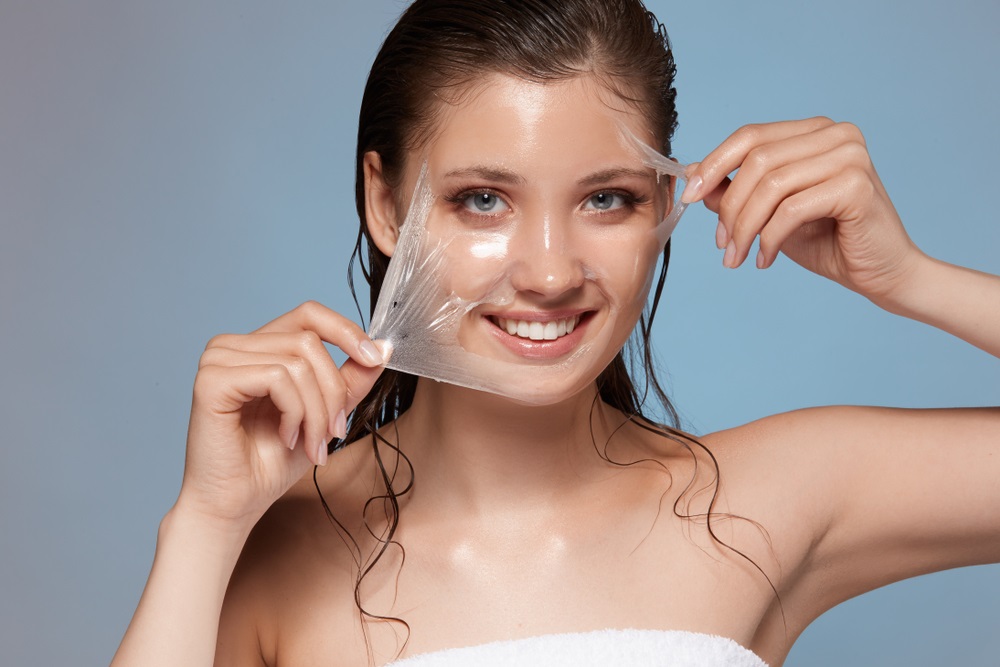It seems like everyone is looking for a new way to reverse common signs of aging. But at Nunnally Dermatology in Baton Rouge, LA, we already have everything you need to subtly yet effectively restore a brighter and more youthful appearance.
One of the ways we do this is with chemical peels. You’ve likely heard of chemical peels before, but you might not know exactly what’s in them or what they can offer. Keep reading to learn everything you need to know about chemical peels, including six surprising benefits.
What Is a Chemical Peel?
A chemical peel is a very popular cosmetic treatment that involves the application of an acidic solution onto the skin. The solution is gently massaged into your face to achieve deep exfoliation and rejuvenation.
Chemical peels are most commonly performed on the face, but they can be administered to other areas, too. They work very similarly to the chemical exfoliants you use in your at-home skin care routine; peels are just much stronger and are capable of achieving more meaningful results.
There are three main categories of chemical peels: light, medium, and deep.
Light Chemical Peels
Light chemical peels are the gentlest form of chemical peel. These peels gently remove the outermost layer of skin, known as the epidermis. Light chemical peels typically use very mild acids such as glycolic acid, lactic acid, salicylic acid, phytic acid, and mandelic acid.
We might recommend a light chemical peel to treat the following skin concerns:
- Fine lines
- Acne
- Dry skin
- Uneven skin tone and texture
Light chemical peels only take a few days to completely heal and can be repeated once a month as part of a regular skin rejuvenation regimen.
Medium Chemical Peels
Medium peels are a little stronger than light peels and can penetrate below the epidermis, down to the dermis. They remove the top layers of skin to achieve a deeper level of exfoliation and cellular turnover. These types of peels are usually used for more severe blemishes, such as the following:
- Wrinkles
- Acne scarring
- Hyperpigmentation
Some acids found in medium peels include trichloroacetic acid, Jessner’s solution, and pyruvic acid.
Deep Chemical Peels
As the name suggests, deep chemical peels penetrate the deepest and can go all the way down to the reticular dermis. As such, deep chemical peels require diligent aftercare and are used to address very deep wrinkles and scars or precancerous growths.
Chemical Peel Benefits
Below are six chemical peel benefits that you can expect when you trust Nunnally Dermatology in Baton Rouge, LA.
1. Helps Clear Up Stubborn Acne
Chemical peels can help manage acne in several ways. Peels provide deep exfoliation to unclog pores and eliminate blackheads. They also decrease oil production and reduce inflammation to help prevent future breakouts.
By removing the top layer of skin, chemical peels also make it easier for your body to absorb and use topical acne treatments.
2. Smooths Out Scars
The appearance of mild to moderate scarring can be improved with medium chemical peels. Chemical peels encourage cellular turnover, which slowly replaces the damaged and scarred skin with new, healthy skin cells that are indistinguishable from the surrounding skin.
3. Targets Several Signs of Aging at Once
In addition to increasing cellular turnover, chemical peels stimulate the production of collagen and elastin, which can help address these common signs of aging:
- Fine lines
- Wrinkles
- Uneven skin tone
- Rough skin texture
- Age spots
- Melasma
By targeting several concerns at once, chemical peels not only provide all-around skin rejuvenation, but they can help you save money, too.
4. Fades Areas of Hyperpigmentation
Hyperpigmentation can be caused by several factors, including the following:
- Sun damage
- Scarring
- Genetics
- Hormonal changes
- Pregnancy
- Certain medications
Since chemical peels remove superficial layers of skin, it may take a few treatment sessions before all of the pigment is removed. But no matter what causes your hyperpigmentation, we can likely help you correct it with chemical peels.
5. Brightens Your Overall Complexion
The dead skin cells that build up on the outermost layer of your skin can cause your complexion to look dull. Removing that top layer of skin allows the fresh and revitalized skin underneath to shine. This creates an appearance that most people find more aesthetically pleasing and overall younger-looking.
6. Minimal Downtime
The chemical peels we perform do not require any anesthesia or sedation, so very little downtime is necessary. Most people choose to take it easy and relax for the rest of the day after treatment, but you can resume your normal activities after a light chemical peel.
How Long Do Chemical Peels Take?
Most chemical peels usually only take about 30 minutes to complete, from beginning to end. Before we apply the peel, we apply a gentle cleanser to prep your face. After the peel is complete, we review all the necessary aftercare instructions with you.
How Can I Prepare for a Chemical Peel?
When you come in for your consultation, we will tell you exactly what kind of preparation is needed before your chemical peel. The specifics will vary based on what kind of peel you are preparing for. In general, we recommend avoiding retinol products, exfoliating products, and waxing or tweezing for one week before your treatment.
Which Chemical Peel Is Right for Me?
Which chemical peel is right for you will depend on what you’re hoping to achieve and the condition of your skin. During your consultation, we will get to know you and your needs a little better so that we can find the best peel and concentration for you.
If you’re ready for clearer skin, contact Nunnally Dermatology today to schedule your chemical peel consultation.


